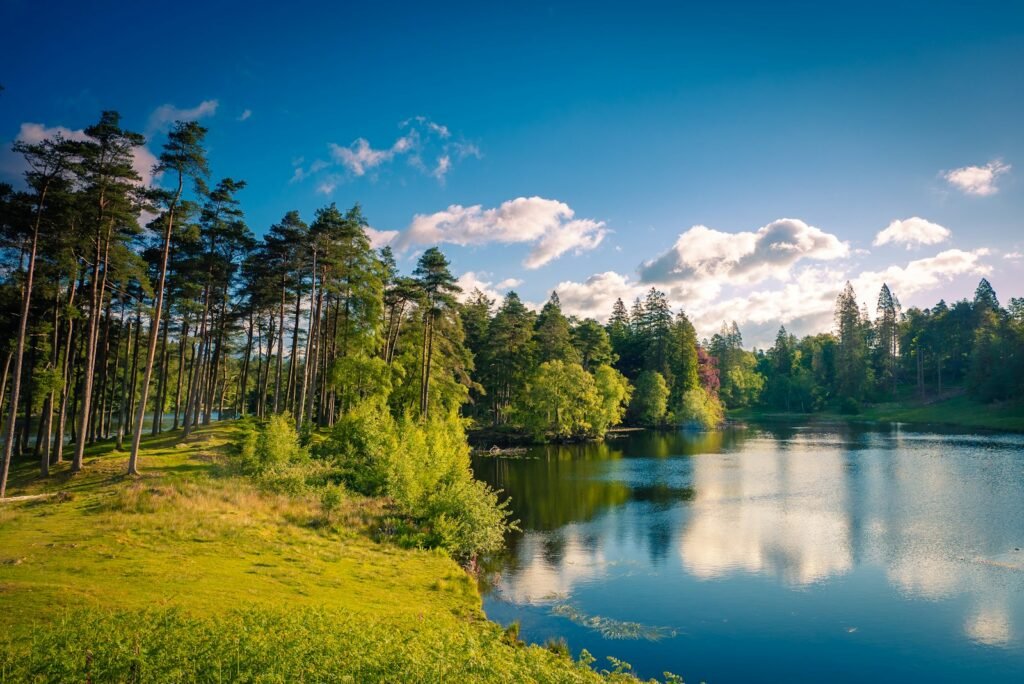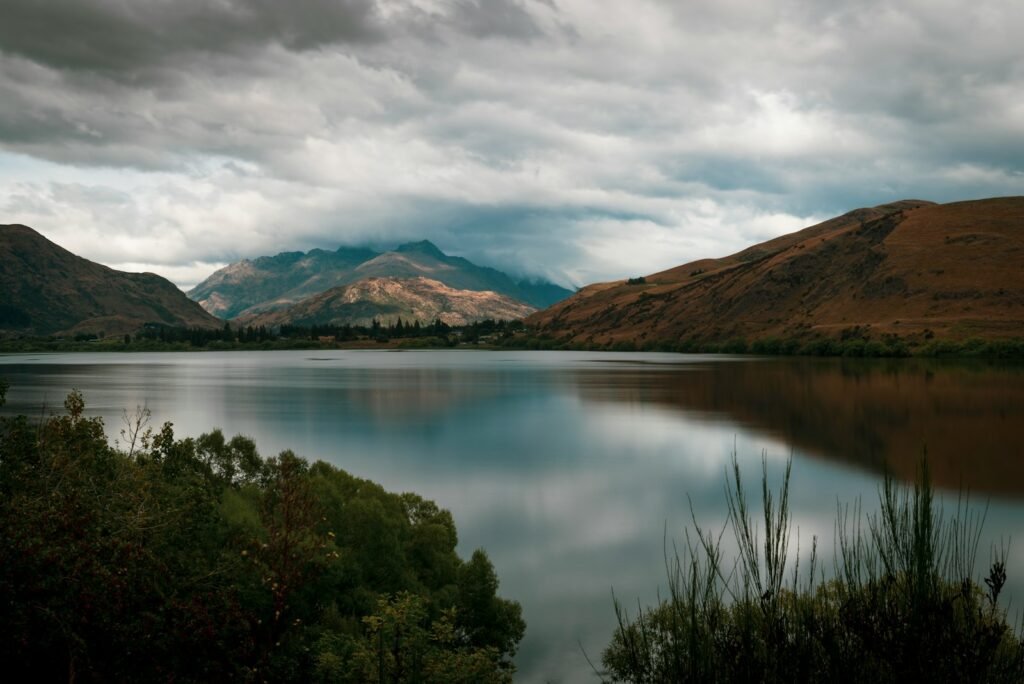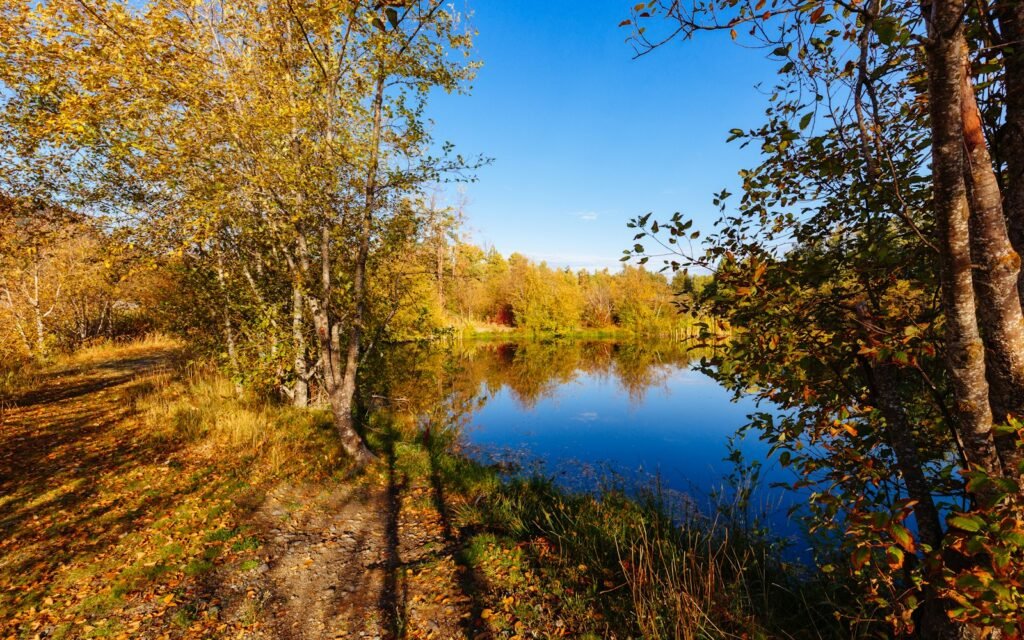Lakes And Ponds Size Differences Explained
Lakes and ponds are two common types of standing freshwater bodies found throughout the world. Though often used interchangeably, lakes and ponds have distinct differences, primarily in their size.
Ponds are generally smaller, shallower inland water bodies, often influenced by local factors. Lakes are larger, deeper, and exhibit more stable conditions. The distinction is based on size, depth, and ecological characteristics, though precise definitions vary.
This article will provide an in-depth comparison of lakes versus ponds, including their sizes, formations, locations, plant and animal life, uses, and more.

Brief Comparison Table
| Feature | Lake | Pond |
| Size | Usually larger and deeper than ponds | Typically smaller and shallower than lakes |
| Depth | Often very deep, up to 1,000+ feet | Seldom deeper than 20 feet |
| Formation | Formed by glaciers, rivers, or flooding | Formed by glaciers, rivers, springs, flooding, or human-made |
| Location | Found in low-lying areas and depressions | Can be found anywhere; often man-made |
| Plant life | Supports aquatic plants, algae, phytoplankton | Supports aquatic plants around edges |
| Animal life | Diverse populations of fish, waterfowl, amphibians | Smaller populations of fish, waterfowl, amphibians, and insects |
| Water source | Has incoming and outgoing rivers and streams | Mainly filled by rainwater, runoff, or springs |
| Uses | Fishing, boating, swimming, drinking water | Irrigation, water source for animals, aesthetic |
Overview of Lakes

Lakes are large, deep bodies of water surrounded by land. Here are some key characteristics of lakes:
- Size: Lakes are typically larger than ponds, ranging anywhere from less than an acre to thousands of square miles. Major lakes can have surface areas of over 5,000 square miles.
- Depth: Lakes are usually very deep, reaching depths of up to 1,640 feet or more. Most lakes have an average depth of about 100 feet. The deep waters distinguish them from ponds.
- Formation: Lakes often form from melting glaciers, rivers, or dammed flooding valleys. Tectonic lake basins also form due to shifts in the earth’s plates.
- Location: Lakes are located in low-lying areas, depressions, or valleys. They are surrounded completely by land.
- Water source: Lakes are primarily fed by incoming rivers and streams and drained by outgoing rivers. Rainwater and melted snow also feed into lakes.
- Plant life: Lakes support a variety of aquatic plant life, including algae, phytoplankton, and submerged vegetation. Plant life is abundant along shallow edges.
- Animal life: With plenty of plant life, lakes support diverse populations of fish, waterfowl, amphibians, reptiles, insects, crustaceans, and more.
- Uses: Lakes are used for fishing, boating, swimming, irrigating crops, and as drinking water sources. They also provide hydroelectric power.
Overview of Ponds

In contrast to lakes, ponds have quite different qualities:
- Size: Ponds are much smaller bodies of water, ranging in size from just a few feet across to around 20 acres. Most ponds measure less than an acre.
- Depth: Ponds are typically shallow, with depths seldom reaching beyond 20 feet. Many ponds average only about 5-10 feet deep.
- Formation: Ponds form from melting glaciers, rivers, springs, dammed streams, or flooding. Many ponds are human-made.
- Location: Ponds can be found anywhere – in forests, plains, valleys, or even neighborhoods. Man-made ponds are intentionally built.
- Water source: Ponds are mainly fed by rainwater, surface runoff, or underground springs. Some connect to streams or rivers.
- Plant life: Ponds support aquatic plants mostly around the edges and shoreline areas. Lilypads, cattails, and algae are common.
- Animal life: Fish, frogs, turtles, waterfowl, and insects are some animals found living in and around ponds. However, biodiversity is lower than in lakes.
- Uses: Ponds provide water for irrigating crops, watering livestock, and aesthetic pleasure. Some ponds are used for fishing.
Comprehensive Comparison Between Lakes and Ponds

Now that we’ve covered the basics, let’s dive into a detailed comparison of the major differences between lakes and ponds.
Size Differences
The most pronounced difference between lakes and ponds is their relative size and surface area. Lakes are massive bodies of water starting at around an acre and expanding to thousands of square miles.
The largest lake in the world, the Caspian Sea, has a surface area of 143,200 square miles.
Meanwhile, ponds are comparatively tiny, measuring less than 20 acres and often only a fraction of an acre. Even large ponds max out at around 20 acres.
The greater size of lakes allows them to support more aquatic life and biodiversity. The expanded surface area means lakes have more littoral zones along their edges where sunlight penetrates to allow plants and algae to grow.
These plants provide food and habitat for fish, waterfowl, reptiles, amphibians, insects, and plankton. Ponds have less surface area littoral zones, limiting the diversity and populations of life.
The large size of lakes also makes them more desirable for human recreational use. Activities like boating, sailing, swimming, and fishing are much better supported on lakes versus smaller ponds.
Lakes’ expanded surface area allows for boats to safely navigate without coming into frequent contact with shorelines.
Depth Differences
In addition to size, lakes and ponds differ significantly in their depth. Lakes are characterized by their deep waters, which distinguish them from the shallower ponds.
Most ponds are relatively shallow, with depths less than 20 feet. In fact, many ponds average only about 5-10 feet deep. These shallow waters heat up quickly and may freeze solid in winter.
In contrast, lakes plunge to much greater depths averaging around 100 feet. However, depths of 1,000 feet or more are not uncommon in large lakes. Crater Lake in Oregon is the deepest lake in the United States at 1,949 feet.
These icy depths result in temperature stratification in lakes, separating layers of water with distinct temperatures. Ponds lack this stratification due to their shallow waters.
The deep waters of lakes support more habitats for aquatic life to develop at different depths and allow for more diversity of fish species.
Deep lakes can harbor cold water fish like trout and salmon that require the cooler temperatures found at lower depths. Shallow ponds cannot support these fish.
Formation Differences
Lakes and ponds also differ in how they are formed in nature. Lakes often originate from melting glaciers that carve out a basin, tectonic shifts creating depressions, or dammed rivers flooding a valley.
These lead to large, deep depressions that gather water. Newly formed lakes can take tens of thousands of years to fill.
In contrast, ponds form in a variety of ways but fill up with water more rapidly. Ponds form through glacier activity, river flooding, high water tables, or even beaver dams blocking streams.
Others are created intentionally by humans. Since ponds are shallow, they accumulate water faster and reach capacity much quicker than deeper lakes.
The different formation methods contribute to differences in depth. Glacial lakes fill deep basins gouged out by massive ice sheets, while ponds may form from a single flash flood event or small glacier.
Tectonic lakes also form in deep faults created by earth movements. Thus, lakes tend to be deeper from their origins.
Location Differences
Lakes and ponds can be found in very different locations and landscapes. Lakes are almost always located in low-lying natural areas like valleys, depressions, or plains.
You can predict where lakes will form based on the terrain. They are surrounded by land and may connect to incoming or outgoing rivers.
Ponds can form virtually anywhere – in forests, fields, prairies, deserts, or even urban areas. Man-made ponds are intentionally constructed by humans in desired locations, regardless of natural terrain.
Ponds form in small depressions or at high water tables. Since ponds are shallow, they require less specific landscape features than the deeper basin required for a lake.
Lakes’ positioning in low-lying lands also makes them more prone to receiving incoming water sources from streams, while ponds may only receive seasonal water from rain or flooding.
This contributes to lakes sustaining larger volumes of water than small ponds.
Water Source Differences
The primary water sources feeding into lakes versus ponds also have key differences. Lakes are sustained by incoming rivers and streams and drained by outgoing rivers.
Water typically flows through a lake, being replenished by these tributaries. Rainwater and melted snow also feed into lakes from their vast watersheds.
Ponds lack major incoming rivers or outlets. Instead, most ponds are mainly filled by rainwater or surface runoff draining into the pond. Some ponds receive groundwater from springs.
Ponds may connect to small streams or overflow into rivers, but these features are secondary. Without large rivers feeding them, ponds contain smaller reserves of water than river-fed lakes.
Lakes gain more water volume thanks to river inputs, allowing them to maintain greater size than ponds not fed by rivers.
Lakes also lose less water to evaporation due to their depth and cooler temperatures. Shallow ponds are more impacted by evaporative losses.
Plant Life Differences
The plant life supported by lakes and ponds also varies considerably. Lakes have expansive littoral zones with abundant aquatic vegetation like cattails, water lilies, and bulrushes growing in shallow areas.
Lakes also harbor large phytoplankton and algae populations that drift in open waters, feeding off nutrients.
Ponds, on the other hand, have much smaller littoral zones confined to shoreline edges.
Though ponds support aquatic plants like water lilies and algae, populations are limited to the small shallow areas around the perimeter. Phytoplankton populations are reduced without large open waters.
More vegetation grows in lakes thanks to greater availability of shallow, sunlit areas. Algae and phytoplankton thrive in lakes’ open waters. Ponds lack expansive littoral habitat and large open waters limiting plant growth.
Animal Life Differences
The animal life between lakes and ponds varies considerably as a result of the differences in size, depth, and plant populations.
Lake ecosystems support highly diverse and abundant animal life, including numerous species of fish, aquatic invertebrates, amphibians, waterfowl, mammals, and more.
Large lakes harbor dozens of fish species thanks to varied habitat. Lakes support migratory birds and waterfowl that use the expansive open waters.
Ponds have less biodiversity and smaller populations. Just a few species of fish, insects, mollusks, and amphibians are found in ponds, with fish limited to smaller varieties like bluegill and perch.
Waterfowl and birds also frequent ponds but in lower numbers without large open waters.
Overall, lakes support richer, more complex food chains and ecosystems. Ponds have simpler ecosystems with fewer plants and animals.
Lakes Vs. Ponds: Human Use Differences
Finally, lakes and ponds differ substantially in terms of human uses and benefits. Large lakes serve many recreational, commercial, and municipal purposes. Key uses include:
- Boating/sailing
- Fishing
- Swimming
- Drinking water
- Hydroelectric power
- Irrigation
- Transportation
Small ponds are much more limited in usage, primarily providing:
- Irrigation for crops/livestock
- Water source for animals
- Fishing, though limited
- Aesthetic value
- Swimming, though less desirable than in lakes
Finally, lakes’ greater size allows for more extensive human uses like cities drawing municipal water supplies, hydroelectric dams, and harboring shipping lanes and ports.
Shallow ponds lack recreational appeal and capacity to provide water at similar scales.
Frequently Asked Questions
What Is The Biggest Difference Between A Lake And A Pond?
The most significant difference is size – lakes are much larger and deeper than ponds. Lakes measure hundreds to thousands of square miles while ponds are less than 20 acres. Lake depths reach over 1,000 feet but ponds are seldom deeper than 20 feet.
Can A Large Pond Be Considered A Lake?
There is no definitive cut-off, but most consider a water body larger than 20 acres and deeper than 6-10 feet to be classified as a lake rather than a pond. Anything smaller is generally considered a pond.
Are Lakes Always Natural And Ponds Man-Made?
No, both lakes and ponds can form naturally or be human-made. However, ponds are more often man-made intentionally while lakes form naturally in low-lying terrain. Many ponds are the result of human construction.
Do Lakes Or Ponds Have More Biodiversity?
Lakes harbor much higher biodiversity and larger populations thanks to their greater size and depth. The expanded habitat in lakes supports more plants, fish, birds, and other wildlife species than the smaller, shallower ponds.
What Human Activities Are Better Suited For Lakes Versus Ponds?
Lakes support more recreation like boating, fishing, and swimming. Lakes also provide drinking water and hydroelectric power that smaller ponds cannot. Ponds are best used for smaller needs like watering livestock, irrigation, or aesthetics.
Final Thoughts
While lakes and ponds appear similar at first glance, they have pronounced differences when it comes to size, depth, formation, location, wildlife populations, and human uses.
Lakes are massive, deep bodies of water formed in depressions that support diverse ecosystems and provide abundant freshwater resources.
Ponds are comparatively tiny and shallow, support less life, and serve more limited human purposes.
When in doubt, check for a size over 20 acres and depth greater than 10 feet to classify a true lake instead of a pond.